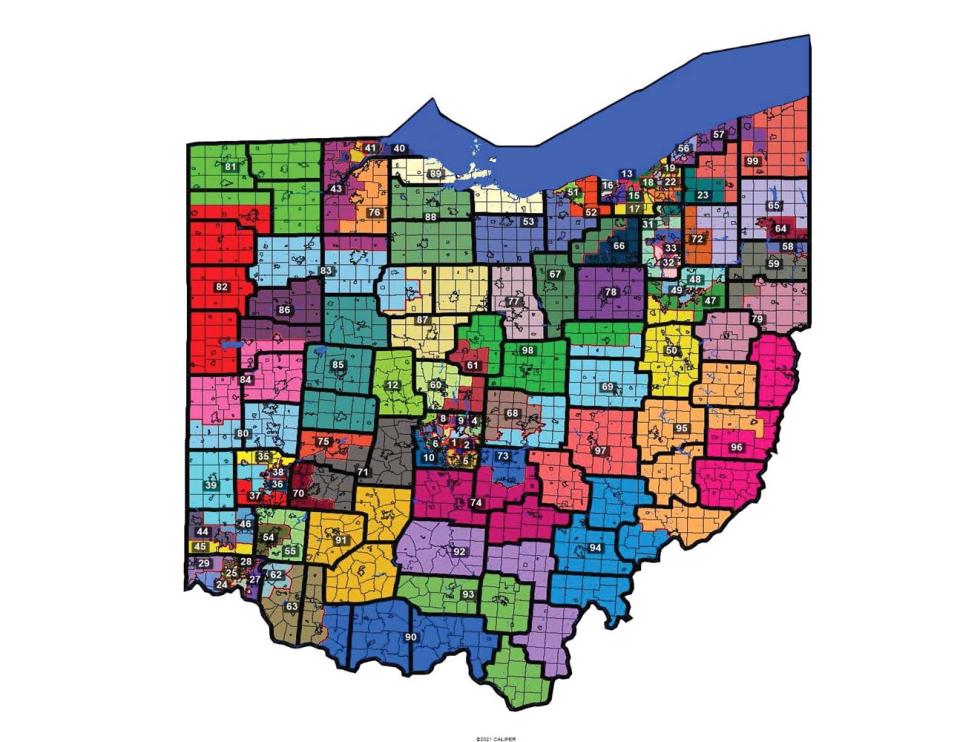Democrats, leftists need to stop whining about redistricting and get better candidates

As a high school student back in the 1980s, I was a winner of our school’s Ohio history contest and was among the top finishers in the statewide competition.
Today, it’s even more important than ever to promote the studying of Ohio’s history, especially since the advent of term limits for members of the Ohio General Assembly.
More: Opinion: Term-limiting and other ways the Ohio lawmakers are getting it way, way wrong
Like it or not, and Ohio Democrats don’t like it very much right now, elections have consequences, and we live in an increasingly partisan world.

More: Redistricting: Eric Holder-backed lawsuit challenges Ohio congressional map
While Ohio voters have changed the process, to some degree, in drawing state legislative lines, they kept the partisan process essentially in place.
With that in mind, they recognized that it was still very likely that these lines would be drawn in a partisan manner and thus required that any map that would pass with just partisan votes would only last for four years.

That process was an improvement that recognizes the fundamental partisan nature of this process and the fundamental partisan nature of most politically active individuals.
It is an improvement because it gives statewide voters additional chances to make changes, every four years of the partisan makeup of this commission.
More: Democrats won't support Republican-drawn Ohio congressional districts, limiting map to four years
If Ohio Democrats do not like these maps, then they will have an opportunity to win the offices of auditor of state, secretary of state, and governor in November 2022.
They could then redraw new maps for the 2026 election, instead of waiting for the next census after the 2030 census.
This reform gives Ohio voters the ability to make changes to state legislative districts six years earlier than they would have had under the previous constitutional provisions.
Ohio Democrats held 3-2 majorities on what was then known as the Ohio Apportionment Board in both 1970 and 1980. They pushed aside any and all proposals to change the process when they held the majority.
''If they don't like the game, they try to change the rules,'' then Ohio Democratic Party James P. Leahy scoffed as part of a New York Times article.
In 1990, Republicans gained a majority on the Ohio Apportionment Board by regaining the offices of governor and secretary of state in the general election. Despite the redrawing of districts,
Democrats still held majorities in the Ohio House until 1994.
Since then, Ohio Republicans have been dominant in both statewide and legislative elections other than the 2006 statewide elections and the 2008 Ohio House elections. Because Democrats have been in the minority for so long, they, along with some Republicans, changed the rules. However, they did not change them completely from their historical partisan framework.

The alternative map proposed by the two Democrat members of the commission was also very highly partisan Democrat.
More: Redistricting: Eric Holder-backed lawsuit challenges Ohio congressional map
For example, my home county of Knox, despite having a population of over 62,000 people, would have been split between two Ohio House districts under their partisan plan.
To my knowledge, Knox County has never been split in this manner.
My neighboring county, Delaware, would have also been also split into two districts, while it would have crammed two Republican incumbent Ohio House Members, Kris Jordan (Ostrander) and Ric Carfagna (Genoa Township), into the same district.
I’m sure there are other Republican districts that attempted to employ similar tactics.
More: Opinion: Democrats are pushing legislation that would slow creation of mRNA drugs
If Democrats and their leftist allies do not like these districts, then I suggest that they get to work recruiting candidates for statewide offices.
Ohio voters have spoken consistently and have elected Republicans to the three statewide offices in both the 2010 and the 2018 elections.
Scott Pullins is an Ohio attorney, charter school board member, political consultant, and writer. He provides services to small businesses, individuals, financial entities, and political organizations. He is exploring a race for the Ohio House in the newly drawn House District 98.
This article originally appeared on The Columbus Dispatch: What can Democrats do about representation in Ohio?

